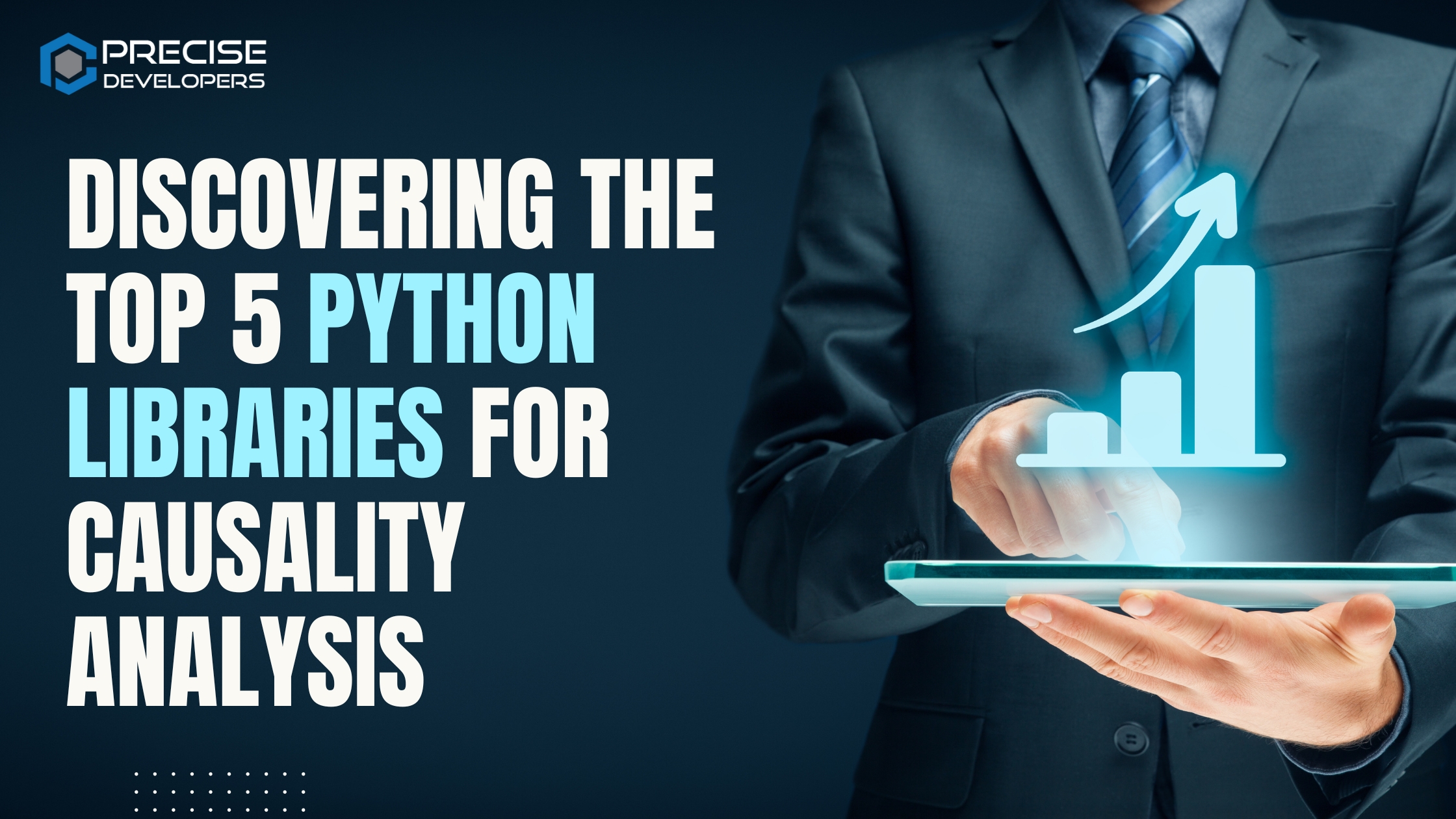Discovering the Top 5 Python Libraries for Causality Analysis
Causality analysis is a crucial field in statistics and data science, as it allows us to understand the relationship between variables and draw conclusions about how one variable affects another. In Python, there are several libraries that have gained popularity in recent years for performing causality analysis. In this blog post, we will take a look at 5 such growing libraries, along with examples of how to use them:
1. CausalNex
CausalNex is a Python library for causal discovery and modeling using Bayesian networks. It utilizes the popular Bayesian network library pgmpy and integrates it with structure learning algorithms from the pymc3 library. CausalNex allows users to perform causal discovery using various methods, such as the PC algorithm and the Fast Causal Inference (FCI) algorithm. It also provides tools for model evaluation and prediction, making it a comprehensive library for causal analysis.
Here is an example of how to use CausalNex for causal discovery using the PC algorithm:
import pandas as pd
from causalnex.structure import StructureModel
# Load data into a Pandas DataFrame
df = pd.read_csv('data.csv')
# Initialize the StructureModel and fit it to the data
sm = StructureModel()
sm.fit(df)
# Use the PC algorithm to learn the structure of the Bayesian network
sm.learn_structure(method='pc')
# Print the learned structure
print(sm.structure)
2. DoWhy
DoWhy is a causal inference library developed by Microsoft Research. It is designed to be simple and flexible, allowing users to perform a wide range of causal inference tasks with minimal code. DoWhy provides implementations of various causal inference methods, including the Potential Outcomes Framework and the Graphical Criteria for Identifiability. It also integrates with popular machine learning libraries such as scikit-learn, making it easy to use in practical applications.
Here is an example of how to use DoWhy to estimate the causal effect of a treatment using the Potential Outcomes Framework:
import dowhy
import dowhy.datasets
# Load a synthetic dataset
data = dowhy.datasets.linear_dataset(beta=10,
num_common_causes=5,
num_instruments=2,
num_samples=10000,
treatment_is_binary=True)
# Initialize the CausalModel with the dataset
model = dowhy.CausalModel(
data=data['df'],
treatment=data['treatment_name'],
outcome=data['outcome_name'],
common_causes=data['common_cause_names'],
instruments=data['instrument_names'],
)
# Use the Potential Outcomes Framework to estimate the treatment effect
identified_estimand = model.identify_effect()
estimate = model.estimate_effect(identified_estimand,
method_name='backdoor.linear_regression')
# Print the treatment effect estimate
print(estimate)
3. EconML
EconML is a library developed by Microsoft Research for causal machine learning in economics. It provides a range of methods for estimating treatment effects, including the popular Double Machine Learning (DML) and Generalized Random Forests (GRF) algorithms. EconML also includes tools for evaluating and visualizing the results of treatment effect estimates.
Here is an example of how to use EconML to estimate the treatment effect using the DML algorithm:
import pandas as pd
from econml.dml import DML
from econml.dr import LinearDR
# Load data into a Pandas DataFrame
df = pd.read_csv('data.csv')
# Split the data into treatment and control groups
treatment = df[df['treatment'] == 1]
control = df[df['treatment'] == 0]
# Define the treatment, outcome, and common causes
treatment_name = 'treatment'
outcome_name = 'outcome'
common_cause_names = ['x1', 'x2', 'x3']
# Initialize the DML model
dml = DML(LinearDR(feature_names=common_cause_names))
# Fit the DML model to the treatment and control groups
dml.fit(treatment, control, treatment_name, outcome_name)
# Estimate the treatment effect
estimate = dml.effect(treatment)
# Print the treatment effect estimate
print(estimate)
4. CausalImpact
CausalImpact is a library developed by Google for analyzing the causal effects of events on time series data. It uses a Bayesian structural time-series model to estimate the counterfactual trend, i.e., the trend that would have occurred in the absence of the event. CausalImpact allows users to analyze the impact of events such as marketing campaigns, policy changes, and natural disasters on time series data.
Here is an example of how to use CausalImpact to analyze the impact of a marketing campaign on website traffic:
import pandas as pd
from causalimpact import CausalImpact
# Load website traffic data into a Pandas DataFrame
df = pd.read_csv('traffic_data.csv')
# Set the pre-intervention period and the post-intervention period
pre_period = ['2018-01-01', '2018-06-30']
post_period = ['2018-07-01', '2018-12-31']
# Initialize the CausalImpact model and fit it to the data
ci = CausalImpact(df, pre_period, post_period)
# Analyze the impact of the marketing campaign on website traffic
impact = ci.analyze()
# Print the estimated impact on website traffic
print(impact.mean_effect)
5. CausalML
CausalML is a library developed by the Uber AI team for estimating treatment effects in machine learning applications. It includes implementations of popular causal inference methods such as DML and GRF, as well as newer methods such as the Uplift Random Forest. CausalML also includes tools for evaluating and comparing the performance of different treatment effect estimation methods.
Here is an example of how to use CausalML to estimate the treatment effect using the DML algorithm:
import numpy as np from causalml.inference.meta import LRSRegressor # Generate synthetic data n = 10000 X = np.random.normal(size=(n, 4)) T = np.random.binomial(n=1, p=0.5, size=(n, 1)) Y = np.random.normal(size=(n, 1)) + T * 1.5 # Initialize the DML model and fit it to the data model = LRSRegressor(n_splits=5) model.fit(X, T, Y) # Estimate the treatment effect estimate = model.predict(X) # Print the treatment effect estimate print(estimate)
In conclusion, Python has a range of growing libraries for performing causality analysis, each with its own set of features and strengths. Whether you are interested in causal discovery, treatment effect estimation, or analyzing the impact of events on time series data, one of these libraries is likely to have the tools you need.
You may also like: Best practices for writing clean and maintainable code
If you like this post then you may also like to share the same with your colleagues. Let us know your thoughts on our blogs and on social media posts on Instagram, Facebook, LinkedIn, and Twitter.

